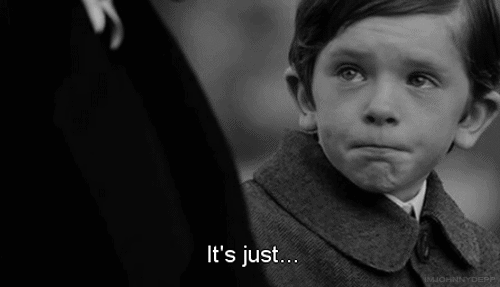The author of this week’s cover article answers questions about what goes on in Nabi Saleh, a West Bank village where protests occur every week against the Israeli occupation. While policymakers debate about whether or
not the United States is in a state of relative

decline, defined as a steady loss of its edge over rising powers such as China in terms of military might and economic affluence, one question sits quietly in the background:

If we are in decline, then what?MIT political science PhD candidate Joshua Shifrinson has some ideas. His dissertation, “Life on the Downward Slope: Explaining State

Decisions to Support or Exploit Declining Great Powers,†assumes decline as a given. And the answers he has found in terms of what’s next run counter to recent strategic military moves. As a result, his work has spurred its own ongoing policy debate.When Shifrinson came to MIT in 2006 from Brandeis University, where he had studied politics and history, he had, he says, “a 22-year-old’s interest in the military.†His interests were firmly rooted in the events of the time, such as the Iraq war, which began and surged during his undergraduate years.He came to MIT to mature his ideas and put them to work. “Analyzing real-world political questions scientifically is very hard to do,†he says. “MIT is the best at bringing rigorous academic skills to bear on policy-related questions.â€Shifrinson
built his skills while at the same time paying attention to news and talk among professors and speakers about the rise of China and India.
Then, when it came time to develop a question for his thesis, the
real-world shifted again.
“The great economic crash occurred,†he says.
“It just smelled like great power rise and great power decline.â€Taking notice, Shifrinson connected his interests in history and military strategy with current events and chose to
focus his graduate research on trying to understand how economic and political change affect international security.In a nutshell, Shifrinson found one measure that strongly influences the best strategic security approach for a great state in decline: the distribution of power.
The concept of balance of power is as old as history itself. Yet among policymakers today, it isn’t always granted as much weight as other, more modern factors, such as open economies and democratization. While

Shifrinson agrees that these other factors matter, his work suggests that balance of power theory should not be ignored. Especially not in a world where many countries are vying for power.In a bipolar world, similar to that during much of the 20th century where two superpowers competed for dominance, “one superpower’s decline gives the other superpower a strong incentive to prey upon its weakness,†Shifrinson says.
“But the declining state can still use
its military to deter predation.â€
Maintaining expensive military might, even in the face of decline, gives the other
superpower pause.But in a multi-polar world — for example, in modern-day Asia, where China is strong, India is rising and Japan and Russia maintain facets of

their former might — the best strategy for a United States in decline is to back off. “Making an effort to maintain

a regional power hold†— as the United States did this past fall with the strategic pivot toward Asia — “encourages allies to take a free ride at the expense of the declining nation,†Shifrinson says. “At the same time, it spirals up competition with rivals.â€While Shifrinson isn’t looking for an immediate seat at the policymaking table, he would like to find room in his career to contribute to policy debates
that influence real-world security decisions. “It seems unfair to talk about the real world all the time without actually engaging in it,†he says.Until then, his near-term
plans involve searching for a university teaching position.
“Political science is one of the few disciplines where everyone has something to say and some insight to offer,†Shifrinson says. “Teaching students how to intelligently grapple with real-world political issues is rewarding work.â€Hours
after a presidential commission raised new google sniper review the safety of the cement mixture intended to temporarily seal BP's Macondo exploration well, oil field service giant Halliburton said the final version of the mixture did not undergo a foam-stability test.
Two days after the worst fight in its 12-year history, the WNBA announced suspensions and fines for Detroit Shock assistant coach Rick Mahorn and 10 of the players involved in the skirmish that came at the end of the Shock's game against Los Angeles on Tuesday night
in Detroit.
The president shouldn't be afraid of the sensible measures he endorsed as a candidate.
Pepco's multimillion-dollar plan to reduce power outages and improve reliability was "cobbled together" without detailed study and could fail to achieve its goals, a team of independent consultants has found. The best N.B.A.
games of the week include the Thunder at Knicks, Grizzlies at Cavaliers and Rockets at Warriors. In a brief tour of the Media Lab, Cameron met with associate professor of media arts and sciences Cynthia Breazeal, who demonstrated some of her group’s recent robotic creations, which are designed to respond to humans’ emotions. He also met with Hugh Herr, an associate professor of media arts and sciences and of health sciences and technology, who works on advanced prostheses for amputees. Herr demonstrated some of the new devices under development in his lab — including the advanced foot-and-ankle prosthetics that Herr, a double amputee, uses himself.Cameron met

informally with a small group of students and recent alumni who have started businesses, or are in the process of doing so. The seven young entrepreneurs each gave a brief introduction to their inventions or concepts for a startup; Cameron then asked questions about
their projects.Fiona Murray, the Skolkovo Foundation Associate Professor of Entrepreneurship at the MIT Sloan School of Management, led that session. Murray, a British citizen, told Cameron, “It’s really the students who are the star of the show.†After the prime minister’s visit, she added, “He did seem impressed, and he seemed to be enjoying himself.†Murray said the young entrepreneurs who Cameron met “represent the diversity of students here on campus,†coming from different departments yet often engaging in interdisciplinary projects. “I think he was trying to get at what makes entrepreneurship part of the ecosystem here,†said MIT Sloan graduate student Bridget Akinc, who was part of that group. “Is it the academics? [He was] trying to really get at the idea of, can you take a university environment and create more of a culture around entrepreneurship? He asked, ‘Does everybody come here with a business idea, knowing that’s what you want to do? Or do you create it while you’re here?’ And there was a combination of responses that really covered the gamut.†“We all came [to MIT] wanting to do something with impact,†Akinc added, “and entrepreneurship seems to be a vehicle for a lot of the teams that have come out of MIT.â€Elliot Cohen, an MBA student at MIT Sloan, said, “I really appreciated it, and I appreciated his questions. I think it’s very difficult, if you’re not inside an ecosystem like this, to appreciate the subtle interactions that make up the foundation of it and are so important. The fact that he really spent some time getting to know people like us who are right in
the middle of it, to me, is really encouraging. He’s
not just trying to analyze it from the outside.â€Akshar
Wunnava, a senior majoring in chemical engineering, said, “It was a pretty cool experience, especially to be an undergraduate and to share how my experience here at MIT has shaped what I’ve learned about business.†Wunnava said he is working on a startup to develop bacterial batteries for use in off-grid villages. After the young entrepreneurs gave Cameron brief descriptions of their business ideas, “He was really sharp, asking us the right questions,†said Danielle Zurovcik SM ’07 PhD ’12, whose startup — which grew out of a class project — aims to

develop a device fat burning furnace the healing of wounds.
Because time was tight, “We actually had to stop him from asking questions, because he was so interested in what we were working on,†she said.
“He was genuinely interested in hearing us.â€Zurovcik said Cameron noted that many universities around the world have tried to become centers of innovation and entrepreneurship, but few have done so as successfully as MIT. Cameron, she said, seemed to be very interested in learning, “How does MIT do it successfully?†Toshi-Aline Ohta Seeger the wife of folk music legend Pete Seeger has died at the age of 91 reports [...] Guard Marshall Henderson has led Ole Miss into the N.C.A.A. tournament with his scoring and antics on and off the court.
Sprouse 'wasn't comfortable' with DC Comics' decision to hire Orson Scott Card to pen an installation of
Superman comicsThe comic book artist who was due to work on the latest Superman series has pulled out of the project, after a row over the appointment of an anti-gay campaigner to write

the stories.Chris Sprouse made the announcement on Tuesday, saying he was "wasn't comfortable" with the backlash that followed the appointment of Orson Scott Card as writer.Superman fans and gay rights groups had criticised DC Comics' decision to hire Card, author of the best-selling Ender's Game books and a fervent critic of gay marriage.Award-winning artist Chris Sprouse's decision to pull out will set back Card's inclusion in what was set to be a high profile addition to the Adventures of Superman series. "It took a lot of thought to come to this conclusion, but I've decided to step back as the artist on this story," Sprouse said in a statement released Tuesday. "The media surrounding this story reached the point where it
took away from the actual work, and that's something I wasn't comfortable with.
My relationship with DC Comics remains as strong as ever and I look forward to my next project with them."Card
is a board member of the National Organisation for Marriage, a group at the forefront of the fight against same-sex marriage in the US. He has called being gay "a reproductive dysfunction" and once suggested people would rise up and overthrow any government that supported gay marriage. His appointment led to threats of boycotts by some fans and comic shops and an online petition against the hiring. Michael Hartney, an actor and writer who has been campaigning for DC to drop Card said Sprouse's decision was "amazing news".DC
issued a statement distancing itself from Card's views last month."As content creators we steadfastly support freedom of expression, however the personal views of individuals associated with DC Comics are just that – personal views – and not those of the company
itself," DC said in a statement. Hartney called the statement "cowardly and lame". "They should just drop him. This man campaigns against gay rights.
It's not just about his beliefs, it's that he is trying to push for those beliefs to become public policy.
If he was against inter-racial marriage, DC would never have hired him," said Hartney.Jono
Jarett of gay fan group Geeks OUT said DC had been targeting the LGBT community and he was disappointed that they were still working with Card: Chris Sprouse

is a talented artist and it's not surprising that he's chosen to distance himself from this radioactive project. It is, however,

surprising that DC continues to stand by Card, whose very public bigotry and anti-gay activism remain at odds with the publisher's attempts to engage their fans in the LGBT community.DC Comics said on Tuesday: "We fully support, understand and respect Chris's decision to step back from his Adventures of Superman assignment. Chris is a hugely talented artist, and we're excited to work with him on his next DC Comics project. In the meantime, we will re-solicit the story at a later date when a new artist is hired."The publisher said it was looking for a replacement artist.Fans' anger over Card's views are now fat loss factor of the filmed adaptation of his sci-fi novel Ender's Game, which

hits theaters in November and will star Harrison Ford.One studio executive told the Hollywood Reporter that the film'sproduction company Summit should "keep him out of the limelight as much as possible".SupermanComics and graphic novelsUnited StatesGay rightsDominic Rusheguardian.co.uk © 2013 Guardian News and Media Limited or its affiliated companies. All rights reserved. | Use of this content is subject to our Terms & Conditions | More Feeds A sleek new property in the heart of a business park, the Capri offers spacious rooms designed for longer
stays. MEXICO CITY - President Felipe Calderon proposed sweeping new measures Thursday to crack down on the cash smuggling and money laundering that allow Mexican cartels to use billions in U.S. drug profits to enrich their criminal organizations. IN SANTIAGO, CHILE The 33 men who have been trapped in a Chilean mine for the past six weeks are preparing for a new odyssey: confronting sudden celebrity.
As she waited for her flight from Seattle-Tacoma International Airport to Medford, Ore., last month, Linda Morrison noticed something unusual in the waiting area. Ron Finley is a crusader for planting
vegetable gardens in urban areas.
KABUL - A suicide bomber detonated explosives at the entrance of an upscale mall and hotel in Kabul Monday afternoon, leaving twisted metal and broken glass at a venue frequented by foreigners and wealthy Afghans.
Despite fears about getting embroiled in the fight against Islamist extremists, the

Security Council on Thursday established a force for Mali, building on a recent military intervention by the French. Tyler Moore hit a three-run homer and Danny Espinosa homered and drove in three runs, leading Gio Gonzalez and the Washington Nationals over the Pittsburgh Pirates 6-2 Sunday. Saudi Arabia’s official news agency says private girls’ schools are now allowed to hold sports

activities in the kingdom, “according to the rules

of Shariah.”
The first trip to Europe for Yankees pitcher Phil Hughes included a harrowing and interesting trip to an English soccer game in Manchester.
CHIHUAHUA, MEXICO - Armed men in military uniforms stormed the law offices of Mario Gonzalez 10 days ago and whisked him away in a pickup truck.
But the kidnappers were after much more than money.
When exercise stresses you out, a college student and

frat brother at age 65, a tool to better predict commute times and other consumer-focused news from The New York Times.
Now consider a program to install a light-rail system — a move that could help relieve highway congestion, expand commuting choices, reinvigorate urban centers, and more.
You know that getting voter approval to fund and implement the new light-rail line will be difficult.
According to the MIT assessment, you can increase your odds of success by having a referendum that addresses multiple transportation modes rather than just light rail. But your best bet is to use existing funds to build a
demonstration line and then present a referendum to fund future expansion. In Dallas and Salt Lake City, for example, people who initially opposed light-rail construction in their communities saw the success of the initial line elsewhere and subsequently lobbied for an extension into their areas. To improve your chances of winning over voters, you should place your new line on a corridor with many potential riders, avoid delays and cost overruns during construction, and involve the affected community in the design process. General advice for planners What general messages can mayors glean from the work to date? According to Layzer, a critical first step is to know your city. "The part I find fascinating that's not often discussed or researched is all the ways that implementation can fail because you didn't think about some aspect of the target — the entity whose behavior you're trying to influence," she says. One key variable is a city's attitude toward environmental action. San Francisco, Austin, Boulder, and Minneapolis, for example, are thought to have a google sniper 2 ethic, which may contribute to those cities' ability to adopt aggressive
sustainability policies. Indeed, in some cases, environmental ethic may trump other seemingly obvious influences, such as climate. Minneapolis, for instance, has cold, snowy winters and yet is a leader in bicycle programs; when winter comes, the bike-share stations are simply removed until spring.
The propensity to accept or
resist rules may also influence the form of a city's programs.
New York, for example, has a culture of rules, fines, and compliance.
In 2009, New York City instituted a rule prohibiting retail establishments that are running air conditioners from propping their doors open on hot days.
Few stores complied — until the city began fining stores and issuing warnings, and compliance began to rise.
"If you tried that approach in San Diego or Houston, you might get a lot more pushback," says Layzer.
In such cities, successful environmental programs are more likely to take the form

of incentives or education than mandates. In the end, different variables and city attributes matter for different kinds of programs — a complicating factor that the MIT teams try to address in their assessments.
"One thing we talk about is that for this policy area, these kinds of city attributes can really matter," says Layzer. "So it may be in the realm of, say, bike planning, New York can learn from Minneapolis but not from Chattanooga."
And while putting values on such attributes as environmental ethic may seem subjective, Layzer believes that long-term residents have

a "pretty accurate sense" of their city's culture and what would work and what would not.
Continuing work Layzer and her team are now grappling with how best to present the

assessment information so that people can use it and learn from it.
Her goal is to produce a series of web-based tools that gives the visitor easy access to relevant, action-oriented analyses incorporating prose, graphics, and links to detailed supporting information. When those tools are

available, she will ask various sustainability organizations to post them so that others can use, refine, and expand them. She is also seeking a means of constantly updating the data so as

to generate new assessments and analyses every few years. Her original concept was to have cities and students collaborate. "Cities have no money, but there are lots of universities with students who want real-world experience," says Layzer. But as her own experience has shown, students have many demands on their time, and progress can be slow — and that is a problem for urban planners.
"Wait
too long and the political moment will have passed," notes Layzer. She is hoping to speed the process by incorporating methods of automated data collection. "While the time-consuming, labor-intensive interviews would still be necessary, certain types of data could be collected automatically that could tell you a lot about a city," she says. Once she's finished "inventing the method" and others are using and improving it, she plans to move onto the next piece: determining whether urban programs actually make a difference. It may seem obvious that they would — but perhaps not always. For example, if people get appliances that are

more energy-efficient, they might use them more, causing overall energy use to increase rather than decrease. Similarly, the energy and environmental gains from requiring new buildings to be green may be less than predicted if those buildings are not used as efficiently as possible. Layzer recognizes that establishing a clear link between sustainability programs and measurable environmental impacts will be tricky. "You have to be clever about what you measure and how you figure out whether it was the program that caused the outcome or not," she says. "It'll be a totally different kind of challenge, but I think it's worth a try." This research was funded by a seed grant from the MIT Energy Initiative.
Work continues under a grant from the Summit Foundation. Further information can be found at papers.ssrn.com/sol3/papers.
























